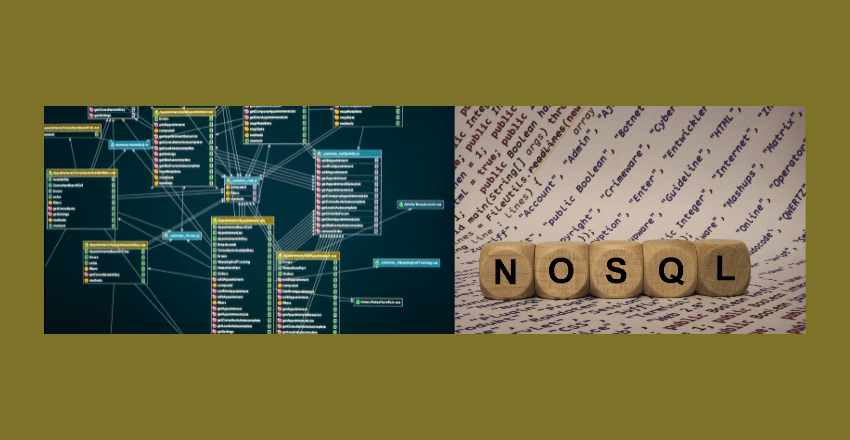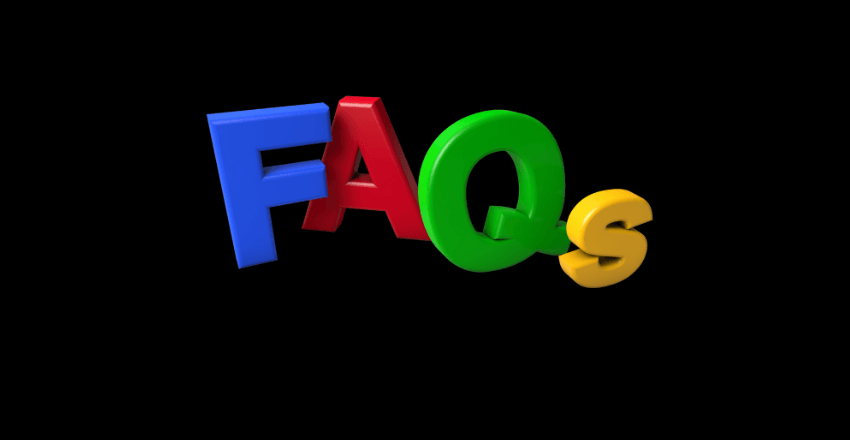
When to use a relational database vs NoSQL” largely hinges on your data needs. Are you dealing with structured data or navigating a sea of unstructured information?
Navigating the Database Landscape: Relational vs. NoSQL
Deciding on a database can feel overwhelming in today’s data-heavy world. Understanding relational and NoSQL databases is crucial. Although relational databases have a long history, NoSQL databases are gaining popularity. So, when should you choose one over the other? What are the pros and cons of each? This piece will delve into these crucial questions, equipping you to make an informed choice.
Understanding Relational Databases: Structure and Use
A Relational Database is a database management system (DBMS) that organizes data in a structured format through tables. Each table’s rows represent individual records, and columns symbolize specific record attributes.
The management and manipulation of data in these databases are accomplished using SQL (Structured Query Language). SQL is the programming language used to create, modify, and extract data in a relational database.
Relational databases’ structured nature promotes easy data accessibility and organization. High data integrity levels are possible with these databases, as data maintenance is simplified due to a consistent storage format.
Ideal for storing well-defined structured data, relational databases excel in managing customer information, financial data, and inventory management.
Advantages of Relational Databases
Key Advantages of Relational Databases: Data Integrity, ACID Properties, and Normalized Data
Data Integrity: A primary benefit of relational databases is their capacity to uphold data integrity. This feature allows the database system to confirm the data’s accuracy, consistency, and compliance with specific rules and constraints set by the database designer.
It helps prevent data redundancy, data anomalies, and various quality issues.
ACID Properties: Relational databases’ support for ACID properties stands as another significant advantage. ACID – an acronym for Atomicity, Consistency, Isolation, and Durability – defines the set of properties that a database transaction must follow to ensure data consistency and reliability.
These properties are indispensable for applications requiring accurate and consistent data processing.
Normalized Data: Utilizing a normalized data model is a distinctive characteristic of relational databases. This approach involves breaking down larger tables into smaller ones and establishing relationships among them.
This method ensures data efficiency, reduces data redundancy, and simplifies the maintenance of data consistency and integrity.
Limitations of Relational Databases

While relational databases have many advantages, they also have some limitations that can become apparent in certain situations.
Scalability: Relational databases can have difficulty scaling horizontally, meaning that adding more servers to handle increased demand can be challenging.
This is due to the strict schema requirements that relational databases enforce, making it difficult to add or change data models without significant modifications to the existing structure.
Flexibility: Relational databases excel with structured data but face challenges when managing unstructured or semi-structured data. This limitation becomes evident when dealing with continuously evolving data or when the schema is ill-defined.
When to use a relational database vs NoSQL?” A pivotal decision every modern organization faces. It’s a choice between structured precision or agile flexibility.
Performance: As the amount of data stored in a relational database grows, the performance can decrease, especially when dealing with complex queries. This can become a significant issue for applications that require fast read and write times.
Overall, relational databases are a proven solution for managing structured data and enforcing data constraints. However, they may not be the best choice for every use case, especially when dealing with unstructured or rapidly changing data.
In such cases, a NoSQL database might be a more appropriate choice.
Examples
Below is a table that provides some examples of when a relational database might not be the best choice for a particular use case.
| Usage scenario | Limitation of relational databases |
|---|---|
| Social media platform | Difficulty scaling due to high traffic and constantly changing data models. |
| E-commerce platform with a large inventory of products | Difficulty scaling due to the need to handle large numbers of queries and complex joins. |
| Real-time analytics platform | Difficulty scaling due to the need to handle large volumes of data and perform complex calculations. |
“It is important to carefully consider the limitations of relational databases and whether they are the best choice for your particular use case.”
Embracing NoSQL Databases: Handling Unstructured Data

NoSQL databases, being non-relational, are designed to manage unstructured and semi-structured data more adeptly than their relational counterparts.
These databases can accommodate diverse data structures like documents, key-value pairs, and graphs, unlike the tabular representation in relational databases.
For organizations grappling with vast amounts of unstructured data that resist easy tabular organization, NoSQL databases emerge as ideal solutions.
These databases not only support rapid application development but also facilitate flexible schema design, aligning perfectly with agile development environments.
Advantages of NoSQL Databases
NoSQL databases offer several benefits, which make them a popular choice for specific use cases. Here are some of the key advantages of NoSQL databases:
- Scalability: Unlike traditional relational databases, NoSQL databases are highly scalable and can handle large volumes of data with ease. They offer horizontal scaling, which means you can add more nodes to the system and distribute the load across them.
- Flexibility: NoSQL databases are designed to handle unstructured and semi-structured data efficiently. They don’t impose any rigid schema, which means you can add and modify data easily without having to worry about predefined structures.
- Performance: NoSQL databases are optimized for performance and can handle complex queries and large volumes of data quickly. They are particularly well-suited for use cases that involve real-time processing or analysis of data.
Horizontal Scaling
One of the key advantages of NoSQL databases is their ability to horizontally scale. Horizontal scaling means that you can add more servers to the system, which allows you to distribute the load across them. This makes NoSQL databases highly scalable and able to handle large volumes of data easily.
Horizontal scaling is particularly useful for large-scale applications that need to handle a high volume of transactions or requests.
For example, an e-commerce website that experiences a surge in traffic during the holiday season can use NoSQL databases to handle the increased load and ensure that the website remains responsive and fast.
Flexibility of Schema Design
NoSQL databases offer flexibility in schema design, which means you can add and modify data easily without having to worry about predefined structures. This makes NoSQL databases particularly useful for applications that deal with unstructured or semi-structured data.
For example, document-oriented NoSQL databases like MongoDB are well-suited for applications that store data in JSON-like documents. These databases can store a wide variety of data types and structures in a single document, which makes it easy to handle complex data models.
Performance Optimization
NoSQL databases are optimized for performance and designed to handle complex queries and large volumes of data quickly. They are particularly well-suited for use cases that involve real-time processing or analysis of data.
For example, NoSQL databases like Cassandra are designed to handle large volumes of data and complex queries efficiently.
They use a distributed architecture that allows data to be stored across multiple servers, which makes them highly scalable and able to handle large volumes of data without sacrificing performance.
When to Use a Relational Database
Relational databases are a good option for scenarios that involve structured data with complex relationships. They are ideal for applications that require maintaining data integrity and enforcing constraints. Some examples of use cases where a relational database might be appropriate include:
- Financial applications that involve complex transactions and require transactional support
- E-commerce platforms that involve complex relationships between customers, orders, and products
- Human resources applications that involve managing employee records and relationships between departments
- Inventory management applications that involve tracking products, orders, and suppliers
Relational databases are particularly good for scenarios where the data model is well-defined and not likely to change frequently. They are also a good choice for applications where data consistency and accuracy are critical.
Example Use Case:
A financial institution that needs to manage customer transactions and account balances would benefit from a relational database. The data model is well-defined, and data integrity is essential for accurate accounting.
A relational database can ensure accuracy and enforce constraints, such as preventing transactions that would result in negative balances.
When to Use NoSQL
When it comes to choosing between a relational database and NoSQL, there are specific scenarios where NoSQL databases are the better option.
Unstructured Data: NoSQL databases are ideal for handling unstructured and semi-structured data, such as social media feeds, audio and video files, and sensor data.
Rapid Development: NoSQL databases are great for managing data in fast-paced environments where an agile approach to development is necessary.
When to use NoSQL instead of SQL?
If you have a massive amount of data that needs to be accessed and analyzed quickly, NoSQL databases are the way to go.
For example, big data applications that require processing data from social media sites like Facebook, Twitter, or Instagram on a real-time basis need to use NoSQL databases that offer the scalability and flexibility necessary to handle these large amounts of data.
In addition, NoSQL databases offer significant advantages when it comes to horizontal scaling, which is essential when dealing with large datasets.
Flexible Schema Design: NoSQL databases allow for flexible schema design, which is perfect for applications that require frequently changing requirements.
In summary, NoSQL databases are best suited for handling unstructured data, fast development environments and scaling of large datasets.
Comparing Relational Databases and NoSQL Databases

When choosing between relational databases or NoSQL databases, it’s important to consider multiple factors. Let’s dive deeper and compare these two database types.
Data Models
Relational databases use a structured data model consisting of tables, rows, and columns. Each table represents an entity, and each row represents an instance of that entity. Columns define the attributes of the entity.
NoSQL databases, on the other hand, use a non-relational data model that can take different forms, such as document-oriented, key-value, or graph-based.
Query Languages
SQL is the query language used by most relational databases. SQL allows users to retrieve and manipulate data in a structured manner. NoSQL databases, however, offer a range of query languages that vary depending on the type of database.
For instance, MongoDB uses a query language called MongoDB Query Language (MQL), while Cassandra uses CQL (Cassandra Query Language).
Scalability
Relational databases are vertically scalable, meaning that to increase their capacity, you need to upgrade the hardware. NoSQL databases, on the other hand, are horizontally scalable, meaning that you can add more servers to increase their capacity.
Performance
Relational databases are generally better suited for complex queries that involve multiple tables and relationships between them. They also perform well for structured data models.
NoSQL databases, however, are better suited for handling unstructured or semi-structured data and perform well with large-scale, high-velocity data.
Summary
Choosing between a relational database and a NoSQL database depends on your specific needs and use case. Consider the structure of your data, the complexity of your queries, and your scalability and performance requirements.
If you have structured data and complex relationships, a relational database might be the best choice. If you’re dealing with unstructured data and need flexible schema design, a NoSQL database might be a better fit.
Real-World Examples of Relational Databases
Relational databases have been around for several decades and are widely used across various industries. Here are a few examples of popular relational databases:
| Database | Industry/Application |
|---|---|
| MySQL | Web applications, e-commerce, media, finance |
| PostgreSQL | Data warehousing, GIS, e-commerce, finance |
| Oracle | Enterprise applications, banking, finance, healthcare |
MySQL is a popular open-source relational database that is known for its ease of use, scalability, and flexibility. It is widely used in web development and e-commerce applications.
PostgreSQL, on the other hand, is known for its robustness, extensibility, and reliability. It is commonly used in data warehousing and analytics applications.
Oracle is a powerful enterprise-grade relational database that supports complex data models and high volumes of data.
Choosing the right relational database depends on various factors such as the size and complexity of the dataset, the industry/application, and the specific features required by the application.
Real-World Examples of NoSQL Databases
NoSQL databases have become a popular choice for handling unstructured data and providing flexible schema design. Here are some real-world examples of NoSQL databases:
MongoDB
MongoDB is a popular document-oriented NoSQL database that stores data in JSON-like documents with dynamic schemas. It is widely used in industries such as healthcare, e-commerce, and finance to handle large volumes of unstructured data.
MongoDB offers features such as automatic sharding and high availability, making it an attractive option for scaling applications.
Cassandra
Cassandra is a distributed NoSQL database that provides high availability and fault tolerance. It is designed to handle large amounts of data across multiple commodity servers and is commonly used in industries such as social media, finance, and IoT.
Cassandra offers features such as tunable consistency and support for multiple data centers, making it a popular choice for handling mission-critical applications.
Redis
Redis is an in-memory NoSQL database that provides high performance and scalability. It is commonly used in industries such as gaming, finance, and advertising to handle real-time data.
Redis offers features such as pub/sub messaging, geo-spatial indexing, and support for multiple data structures, making it a versatile option for handling different types of data.
Pros and Cons of Relational Databases vs NoSQL Databases
Choosing between a relational database and a NoSQL database can be a challenging task. Both options have their advantages and disadvantages, and the decision will depend on various factors such as the type of data you are dealing with, the use case, the scalability requirements, and more.
Here is a summary of the pros and cons of each option:
Relational Databases
| Pros | Cons |
|---|---|
| Structured data: Relational databases excel in handling structured data, making them ideal for applications with a well-defined schema. | Scalability: Relational databases can be difficult to scale horizontally, making them less suitable for large-scale applications that require high availability and consistent performance. |
| Data integrity: Relational databases enforce referential integrity and support ACID properties, ensuring data consistency and accuracy. | Flexibility: Relational databases can be less flexible when compared to NoSQL databases, making them challenging to adapt to new use cases or evolving requirements. |
| Normalized data: Relational databases enable data to be organized in a normalized manner, reducing data redundancy and improving data consistency. | Performance: Relational databases may experience performance issues when dealing with complex data models, requiring extensive queries or joins. |
NoSQL Databases
| Pros | Cons |
|---|---|
| Scalability: NoSQL databases are designed to scale horizontally, enabling them to handle large volumes of data and high traffic loads with ease. | Unstructured data: NoSQL databases are not well-suited for structured data, making them less suitable for applications with a defined schema. |
| Flexibility: NoSQL databases offer flexible schema design, making them easy to adapt to evolving requirements and new use cases. | Data integrity: NoSQL databases may sacrifice data integrity and consistency for scalability or performance, making them less suitable for applications that require strict data accuracy. |
| Performance: NoSQL databases can provide high performance when dealing with large volumes of data and complex data models. | Query languages: NoSQL databases may have limited query languages and less mature tooling when compared to relational databases, requiring specialized expertise to work with effectively. |
Ultimately, the choice between a relational database and a NoSQL database will depend on your specific needs and requirements. Each option offers unique features and capabilities, and the decision should be made based on a thorough analysis of the use case and the available options.
Common Problems And Solutions – When to Use a Relational Database vs NOSQL

1. Problem: Lack of Clear Understanding of Data Type
Many people struggle with understanding the type of data they are dealing with. Consequently, they might end up choosing a database type that doesn’t fit their needs.
Consequence: Choosing a database type that doesn’t align with your data can lead to inefficient data handling, slower query performance, and difficulty in data management.
Solution: Identify whether your data is structured or unstructured. If your data is primarily structured (with a clear schema), a relational database would be a good choice. If you’re dealing with a large amount of unstructured or semi-structured data,
NoSQL might be a better fit. For instance, if you’re storing customer transactions, a relational database like MySQL would be suitable. But if you’re storing social media data, a NoSQL database like MongoDB would be more effective.
2. Problem: Unclear Business Requirements
Not having a clear understanding of the business requirements is a common problem when deciding “when to use relational database vs NoSQL.”
Consequence: If the database chosen doesn’t meet the business requirements, it could lead to underperformance, reduced productivity, and increased costs for the organization.
Solution: Clear and detailed business requirement analysis should be carried out before choosing the database type. If the business needs demand high-speed reads and writes, scalability, and flexible schema, a NoSQL database might be more suitable.
However, if your application requires complex queries and transaction consistency, a relational database would be a more effective choice.
3. Problem: Ignoring Scalability Requirements
Another common mistake is ignoring scalability requirements while deciding “when to use relational database vs NoSQL.”
Consequence: If the data growth outpaces the capacity of the chosen database, it can lead to performance issues, and upgrading can be expensive and time-consuming.
Solution: If your application’s data is likely to grow rapidly or needs to be distributed across many servers, a NoSQL database like Cassandra would be a more scalable solution. Conversely, if your data volume is predictable and manageable, a relational database could be sufficient.
4. Problem: Overlooking Data Consistency Needs
Data consistency needs are often overlooked when deciding “when to use relational database vs NoSQL.”
Consequence: Failing to consider data consistency needs can lead to data integrity issues, affecting the reliability of the application.
Solution: If your application requires strict data consistency, as in banking transactions, a relational database would be ideal due to its ACID (Atomicity, Consistency, Isolation, Durability) properties.
On the other hand, if eventual consistency is acceptable (like in a recommendation engine), a NoSQL database would suffice.
5. Problem: Neglecting the Speed and Performance Requirements
Speed and performance are often overlooked when deciding “when to use relational database vs NoSQL.”
Consequence: Neglecting these requirements can lead to slow query responses and decreased user satisfaction.
Solution: For high-speed reads and writes, NoSQL databases are often faster because they allow horizontal scaling across servers. However, for complex transactional operations, relational databases can be optimized for better performance.
6. Problem: Not Considering the Learning Curve
The learning curve of new database technologies is frequently ignored when choosing “when to use relational database vs NoSQL.”
Consequence: If the database system is too complex for the team to learn quickly, it can lead to delays in development and increased costs.
Solution: Consider the expertise of your team. SQL is widely taught and known, making relational databases often easier to understand. However, many NoSQL databases have simple APIs and flexible data models that can be easier for developers familiar with JSON and JavaScript.
7. Problem: Underestimating the Importance of Community and Support
The availability of community support and resources is often underestimated when deciding “when to use relational database vs NoSQL.”
Consequence: If issues arise, having limited resources can lead to longer problem-solving times, potentially delaying the project.
Solution: Both relational databases and NoSQL databases have robust communities. SQL has been around longer and tends to have a larger community and more resources. However, popular NoSQL databases like MongoDB and Cassandra also have strong communities and extensive resources.
Choose a database that has a vibrant community and abundant resources to ensure you get the necessary support when needed.
Frequently Asked Questions (FAQ) about Relational Databases vs NoSQL Databases

Q: What is the main difference between a relational database and a NoSQL database?
A: The primary difference between a relational database and a NoSQL database is their data model. Relational databases use a structured data model, while NoSQL databases utilize a non-relational or semi-structured data model.
Q: When should I use a relational database?
A: Relational databases are most suitable for use cases that involve structured data and complex relationships between data entities. They excel at ensuring data integrity and enforcing constraints, making them ideal for scenarios where maintaining data accuracy is critical.
Q: When should I use a NoSQL database?
A: NoSQL databases are a better choice for scenarios that involve unstructured data, rapid development, and the need for flexible schema design. They are also well-suited for handling large and complex data models, where scalability and performance are crucial.
Q: Which is better, a relational database or a NoSQL database?
A: There is no clear winner between relational databases and NoSQL databases. Each option has its own set of advantages and disadvantages, and the choice between the two largely depends on the specific requirements of your use case.
Q: What are the most popular examples of relational databases?
A: The most commonly used relational databases include MySQL, PostgreSQL, and Oracle. Each of these databases has its own strengths and weaknesses and is used by various industries for different use cases.
Q: What are the most popular examples of NoSQL databases?
A: Some of the most popular NoSQL databases include MongoDB, Cassandra, and Redis. These databases are widely used for handling unstructured and semi-structured data, providing high scalability, and offering flexible schema design options.
Q: Are NoSQL databases faster than relational databases?
A: NoSQL databases are generally faster than relational databases for handling large volumes of data and complex queries. However, relational databases excel at maintaining data integrity and enforcing constraints, which can impact performance in certain scenarios.
Q: Can a relational database be scaled horizontally?
A: Yes, relational databases can be scaled horizontally by partitioning the data across multiple servers. However, this approach can be challenging as it requires ensuring data consistency across all nodes and can impact performance due to increased network overhead.
Q: Are NoSQL databases suitable for small-scale projects?
A: Yes, NoSQL databases can be a good choice for small-scale projects as well. They offer flexible schema design options, making them ideal for rapid development. Additionally, they can handle smaller data models with ease, allowing for efficient data storage and retrieval.
James is a highly acclaimed author renowned for his extensive experience in the realm of data development and architecture, offering valuable insights to the data industry through his compelling literary works. Residing in the charming city of Oxford, he embarked on an illustrious academic journey at Oxford University, where he delved into the intricate world of computer science. This foundation served as the catalyst for his exceptional career.
After completing his studies, James embarked on a professional path that led him to renowned technology giants. He first honed his skills as a data developer at Microsoft, where he showcased his prowess in designing and implementing robust data solutions. His innovative contributions played a pivotal role in enhancing data management processes, solidifying his reputation as a meticulous and forward-thinking professional.
Seeking new challenges and broader horizons, James embarked on a transformative journey at Amazon Web Services (AWS). In this influential position, he leveraged his profound understanding of data architecture to shape cutting-edge solutions for clients. His leadership and technical acumen enabled businesses to harness the power of cloud computing and revolutionize their data management practices, further solidifying his status as an industry authority.







